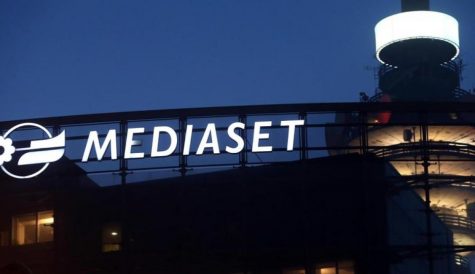
After more than 40 years of operation, DTVE is closing its doors and our website will no longer be updated daily. Thank you for all of your support.
DVB-I: not just for broadcasters
It looks like DVB-I is going to be an influential standard, helping to shape the future of TV. So far, it appears to be broadcaster-centric, but there is no technical reason why born-digital media owners cannot take advantage of the technology to gain programme guide prominence, writes John Moulding.
 After proof-of-concepts and trials of DVB-I in Italy, Germany, Spain and Ireland, this content discovery standard has emerged as a serious proposition for enabling the convergence of broadcast-delivered and broadband-streamed linear channels in an integrated programme guide. DVB-I also supports delivery of on-demand content, but its real value for the television market is the hybrid linear channel line-up.
After proof-of-concepts and trials of DVB-I in Italy, Germany, Spain and Ireland, this content discovery standard has emerged as a serious proposition for enabling the convergence of broadcast-delivered and broadband-streamed linear channels in an integrated programme guide. DVB-I also supports delivery of on-demand content, but its real value for the television market is the hybrid linear channel line-up.
So far, DVB-I (updates to which were published this week) looks like a broadcaster-centric solution to help broadcasters maintain the linear user experience even as they introduce pop-up channels (like for major sports tournaments) or later migrate their main channels from broadcast spectrum to streaming. A key feature of DVB-I is that a programme guide spot is given over to a channel brand, but the client device can link to a satellite, terrestrial or broadband streamed version of that channel, depending on what circumstances demand.
One of the most interesting thoughts to emerge from the proof-of-concepts is what DVB-I could do for the rest of the industry – notably the born-digital streamers who have never broadcast and who have never been in a programme guide. They have not been part of the tests and they may be happy continuing life wrapped inside an app, focused on on-demand programming. But as DVB-I is partly about allowing streamed linear content to break out of apps and appear in an up/down, channel zapping environment, possibly using alphanumeric remote-control keypads for quick navigation between broadcast and streamed linear channels, some might see an opportunity to gain ‘in your face’ prominence in a prominent UI position.
Changing the economics of linear
Writing in DVB Scene in September 2022, Marco Pellegrinato, Standards & Innovation Director at Mediaset, listed the benefits of DVB-I to broadcasters but then highlighted a “weakness” – the lost privilege of traditional broadcasters because a DVB-I platform can theoretically be accessed by third-party, online-only FAST publishers.
Highlighting FASTs makes sense since they are already in the linear and programme guide game, thanks to non-DVB-I (and all-IP) guides on Smart TV platforms, but non-FASTs could also develop linear services specially for this environment. As with existing streamed linear channels, there are no satellite or terrestrial spectrum costs involved, so the economics of linear channel provision changes.
Pellegrinato went on to outline regulatory considerations that he believes spin from potential non-broadcaster involvement, like the need to guarantee fair and regulated access to emerging DVB-I platforms.. He also highlighted the need for equivalent rules, rights and conditions to be applied to non-broadcasters in the same way they are applied to existing broadcasters.
Prominence issues associated with hybrid programme guides would also become more pressing in a world where born-digital media owners take advantage of DVB-I. One of the many motives for the DVB-I trials in Italy, led by Mediaset, was to focus regulator minds on what television could look like when delivered as a mix of broadcast and broadband into the same programme guide.
The key point is that today DVB-I looks like a broadcaster-centric solution for broadcaster dominated hybrid programme guides – a kind of next-generation free-to-air platform solution. But this is a commercially agnostic standard that could be used by anyone – providing their services get listed on the service lists that a DVB-I client must interrogate.
All-ABR roadmap
DVB-I is a tale of quiet success as the DVB proves its ongoing relevance for an increasingly streamed world. DVB-I should be viewed alongside DVB-NIP, which supports native IP distribution over the satellite or terrestrial broadcast networks themselves, without the need for MPEG-2 Transport Stream. This supports ABR streaming via broadcast and provides a roadmap towards all-ABR television.
Focusing on what broadcasters are gaining from DVB-I, the trials have shown a desire to use the standard to make TV better by throwing aside limitations imposed by broadcast networks. Use of pop-up channels has been an important theme, with RTVE making this a particularly important part of the Spanish pilot they led. Four standard DTT channels were available via DVB-I and so were seven IP streams – one each from seven tennis courts at the Mutua Madrid Open. Users could zap between them all on a remote control.
Mediaset used DVB-I as a way to harness advanced video and audio formats, including the use of HEVC coding, on the streamed channels being received on DVB-I capable Smart TVs. When watching DTT channels, reception reverted to legacy formats and codecs. The broadcaster has also been very interested in how DVB-I supports thematic channels or more personalised content without the costs of over-the-air transmission.
The German pilot involving ARD, among others, looked closely at the integration of DVB-I and HbbTV, which in that country is considered part of any complete broadcaster service. DVB-I can be used to launch an HbbTV application to link viewers directly from a programme guide into a VOD library, for example. A DVB-I programme guide could even contain an app – and RTÉ, Ireland’s national broadcaster, created an EPG spot for RTÉ Player so viewers could enter it without leaving the guide.
DVB-I can work on IP-only devices including multiscreen devices, and RTÉ also looked at the possibility of using the standard to extend the Saorview DTT platform to laptops, smartphones and tablets.
Replacing lost spectrum

Source: Adobe stock
For the Italian DVB-I tests, there was a special motivation after 700MHz spectrum losses meant many regional and local broadcasters had to stop or reduce their DTT transmissions. In that country DVB-I is considered a great way to maintain existing programme guide spots while streaming the content instead – and of course this could be a microcosm of what happens to the entire television industry if the World Radiocommunications Conference 2031 finally slashes into DTT spectrum.
The whole point of DVB-I is that it is network-agnostic – it provides a front-end that could look the same the day before spectrum loss as the day after, with a programme guide still listing the same channel numbers and brands, but with the DVB-I client now being directed to streamed versions of those channels.
When the DVB first proposed DVB-I, my immediate question to them was why broadcasters would want to provide streaming services outside of their apps after investing so much marketing and technology into capturing viewers and keeping them for as long as possible in those app empires, harnessing personal recommendations and other data smarts. The evidence from the DVB-I trials suggests they are focused on a bigger picture, which partly accepts that they cannot rely on apps alone in an increasingly streamed world, and partly acknowledges that the linear UX is going to remain an important content discovery tool and somewhere they need to be.
If prominence regulation works in their favour, broadcasters (or more precisely, public service broadcasters) could maintain their rights to the top spots in any programme guide deep into the majority-streamed or all-streamed world, after broadcast-only EPGs become redundant. There would be an ongoing advantage to maintaining the relevance of guides, given such a scenario.
But as mentioned at the outset, any broadcaster advantage is not inherent to the DVB-I environment itself, which is a technical one. And DVB-I is a place where others could play, if they wanted to.


